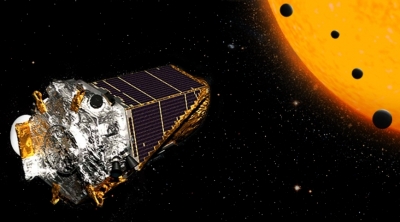
The Kepler space telescope is a retired space telescope launched by NASA to discover Earth-size planets orbiting other stars. Named after astronomer Johannes Kepler, the spacecraft was launched on March 7, 2009, into an Earth-trailing heliocentric orbit.
Kepler discovered 2,682 exoplanets during its tenure and there are more than 2,900 candidate planets awaiting confirmation — history suggests most of those are the real deal. The mission continued well beyond its scheduled end date, although problems with pointing in 2013 forced mission managers to create a K2 mission in which Kepler swings its view to different spots of the sky.
In the early years of exoplanet hunting, astronomers were best able to find huge gas giants — Jupiter’s size and larger — that were lurking close to their parent star. The addition of Kepler (as well as more sophisticated planet-hunting from the ground) means that more “super-Earths” have been found, or planets that are just slightly larger than Earth but have a rocky surface. Kepler’s finds also allow astronomers to begin grouping exoplanets into types, which helps with understanding their origins.
Kepler’s major achievement was discovering the sheer variety of planetary systems that are out there. Planet systems can exist in compact arrangements within the confines of the equivalent of Mercury’s orbit. They can even orbit around two stars, much like Tatooine in the Star Wars universe. And in an exciting find for those seeking life beyond Earth, the telescope revealed that small, rocky planets similar to Earth are more common than larger gas giants such as Jupiter.
Picture Credit : Google

